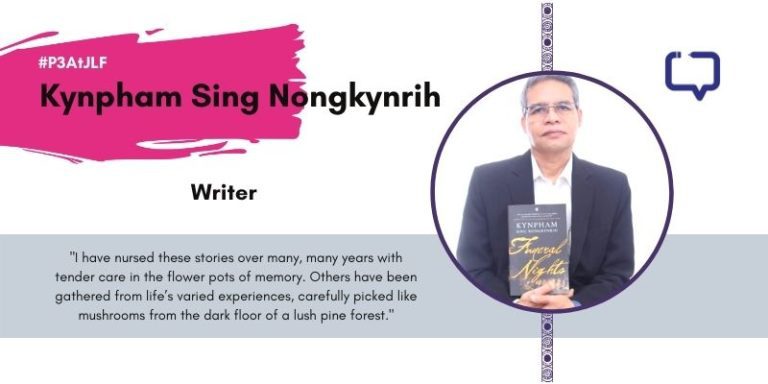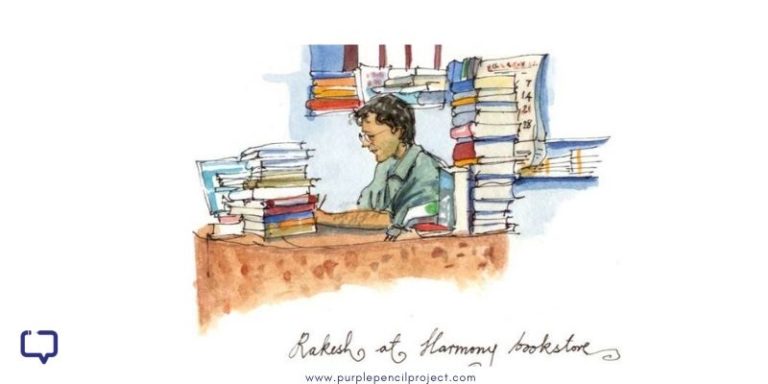Akankshya Abismruta reviews Madhur Gupta’s Courting Hindustan (Published by Rupa Publications, 2023)
In Courting Hindustan: The Consuming Passions of Iconic Women Performers of India, Madhur Gupta delves into the lives and times of 10 spectacular women who have either been forgotten or whose voices have been silenced throughout history.
In the introduction, Gupta provides a succinct history of women performers in the last 2500 years. He brings together myths and history to make his point that these women who were looked down upon were in the real sense feminist icons of their times.
We encourage you to buy books from a local bookstore. If that is not possible, please use the links on the page and support us. Thank you.
Madhur Gupta gives us a view of how these women performers were perceived. They were once tied to becoming Nagarvadhu, the town’s consort. Later, in parts of India, they were married to deities in the temples as Devadasis and Maharis. During the Mughal era, courtesans were the epitome of culture, art, and knowledge to the point that to-be Nawabs were sent to them to learn the tehzeeb.
He further enlightens us that it is with the coming of the British that the tradition of the courtesans was reduced to carnal desires. They were looked down upon as the British couldn’t understand the polyamorous nature of their existence and believed it to be impure.
Window to Adventurous Lives by Madhur Gupta
For the most part of history, courtesans were highly respected. They could only be afforded by the elites, so they were also significant to showcase one’s wealth. In fact, Madhur Gupta states they were sometimes part of the dowry. It makes one wonder, despite being subjects of respect, these women performers were still a product for the market.
Gupta, further, doesn’t delve highly into the exploitation of women as Nagarvadhu, Devadasis, or Tawaifs. He acknowledges that every woman puts herself at risk but doesn’t go deep into it.
The introduction is followed by the adventurous lives of 10 beautiful women, beauty being a prerequisite to being a courtesan. It begins with the now-popular story of Amrapali. Gupta plays to his strengths by bringing together various records of the stories.
Madhur Gupta also states that the lines between myths and history are blurred. In putting forth various versions of the stories related to these women from ancient times, he challenges the reader’s curiosity.
Courtesan Culture
In medieval times, courtesans were quite common in the Mughal courts. The courtesans mentioned here often have a rags-to-riches story. A king falls in love with the beauty of the woman, she rejects him. He pursues her anyway, she gives him impossible tasks that are made possible by divine interventions. She agrees to marry and rises high in power.
It is not power that these women seek but when the time comes, even when their partners fled, they stood together with their people to preserve the land. Begum Samru was a powerful politician. Similarly, Begum Hazrat Mahal came to the aid of emperors fighting the British.

They have a nationalistic spirit in them to preserve their land and people. These stories are eye-openers for a novice in the field as this aspect of ruling and being involved in politics is hardly ever associated with courtesans represented in pop culture.
Moreover, we are introduced to the polyamorous nature of their relationship vis-a-vis their faithfulness and loyalty. It is by nature of their profession that most of these women had different lovers, but they also had a void in their hearts for true love. Gupta brings out the powerful nature of their social life along with the vulnerable nature of loneliness in their personal life.
There’s a mother-daughter trope in a few of these women’s lives. The mothers educate their daughters in all the art forms but find a way for them to have a more respectable life than the ones they lived. It further showcases the fierce nature of the courtesans to protect their own.
We are also introduced to the history of the gramophone and its arrival in India. Gauhar Jaan is associated with reducing an hour-long khayal to 3 minutes to be recorded for the gramophone in the early 20th century. She finds a way to keep the essence of the khayal alive in its adaptation.
Moreover, it was a time when singers like Gauhar Jaan and Janki Bai saw rose to fame because men singers were superstitious that recording their voices will take away their ability to sing. This showcases that women were more open to experimentation than men for they didn’t have much to lose.
We encourage you to buy books from a local bookstore. If that is not possible, please use the links on the page and support us. Thank you.
Despite their fame, these women were not allowed to join the Indian National Congress. They continued to be in the margins and elites looked down upon them. In fact, we later learn that only married women were allowed to sing for All India Radio. So what if a pioneering woman like Jaddan Bai existed who went on to become the first woman music director in the country among many other things!?
Courting Hindustan is an important book for it works as an enlightening introduction to the life of these carefully selected women performers who have not only been pioneers in their fields of work but also in state politics, advocating for better lives of people.
And the best part of the book is that it is reader-friendly for people who are intimidated by non-fiction. The language is accessible, and the storytelling keeps the readers on the edge of their seats.
Favourite quote from the book
Now, one must remember that when audio recording technologies came to India in the early twentieth century, it was the women who truly embraced and adopted this novel and unknown medium. Disregarding superstitious beliefs, circulated by male artists—that recording on evil English devices would infuriate the gods and make one lose their voice—they took the initiative and recorded.
Not only did this help democratize music and carry it out of the realms of the kothas and imperial courts, it also freed these female musicians from the clutches of exploitative patrons. It helped them break free from the restraints of being accessible only to the upper-class Indian strata.
Have you read this journey of 10 women performers of India? What do you think of it? Drop a comment below and let us know!

As part of our effort to compensate our writers better, we at Purple Pencil Project have launched the #PayTheWriter initiative, where readers can directly show support and appreciation for our wonderful team.
Scan or upload this image on your UPI app, and show them the love 😀





















